LAST CHANGE % CHG
Get index data by Email
DJIA 20957.73 23.18 0.11%
Nasdaq 5908.84 8.08 0.14%
S&P 500 2383.46 2.08 0.09%
Russell 2000 1388.20 2.17 0.16%
Global Dow 2708.86 4.94 0.18%
Japan: Nikkei 225 19521.59 -68.55 -0.35%
Stoxx Europe 600 378.32 0.59 0.16%
UK: FTSE 100 7424.96 9.01 0.12%
Viernes 17/03/17 Produccion industrial
45 mensajes
• Página 3 de 3 • 1, 2, 3
Re: Viernes 17/03/17 Produccion industrial
Inconstitucional
https://www.wsj.com/articles/justice-de ... 1489780968
https://www.wsj.com/articles/justice-de ... 1489780968
- admin
- Site Admin
- Mensajes: 165592
- Registrado: Mié Abr 21, 2010 9:02 pm
Re: Viernes 17/03/17 Produccion industrial
20914.62 -19.93 -0.10%
Nasdaq 5901.00 0.24 0.00%
S&P 500 2378.25 -3.13 -0.13%
Russell 2000 1391.52 5.49 0.40%
Global Dow 2704.83 0.91 0.03%
Japan: Nikkei 225 19521.59 -68.55 -0.35%
Stoxx Europe 600
Nasdaq 5901.00 0.24 0.00%
S&P 500 2378.25 -3.13 -0.13%
Russell 2000 1391.52 5.49 0.40%
Global Dow 2704.83 0.91 0.03%
Japan: Nikkei 225 19521.59 -68.55 -0.35%
Stoxx Europe 600
- admin
- Site Admin
- Mensajes: 165592
- Registrado: Mié Abr 21, 2010 9:02 pm
Re: Viernes 17/03/17 Produccion industrial
The Magic Behind Glencore’s Recovery: Mastering the Zinc Market
Company’s CEO is outspoken about Glencore’s approach to managing supply and thus market prices
By Scott Patterson and Timothy Puko March 17, 2017 10:02 a.m. ET
A zinc ingot. It will be melted to 836 degrees Fahrenheit for galvanizing at V&S Amboy Galvanizing in Perth Amboy, N.J.
A zinc ingot. It will be melted to 836 degrees Fahrenheit for galvanizing at V&S Amboy Galvanizing in Perth Amboy, N.J. Photo: Michael Bucher/The Wall Street Journal
No one in the world mines more zinc than Glencore PLC. No one in the world trades more of this essential metal for making steel. And no one has gotten richer, taking mines out of production and withholding refined zinc from the market to drive prices higher.
Chief Executive Ivan Glasenberg says his company is reaping the rewards of a bold and risky strategy that helped reverse the mining-and-trading behemoth’s downward spiral and turn it into a profit-making machine.
Zinc prices jumped 7% on the day in October 2015 when the Switzerland-based company said it was shutting down production amounting to 4% of global production of zinc. Prices for the metal have climbed 70% since as demand outpaces supply, outperforming copper (up 15%) and aluminum (up 20%) during a broad-based global commodities rally.
Mr. Glasenberg is outspoken about Glencore’s approach to managing supply and thus market prices, something that is typically verboten for mining executives, who are wary of complaints about market power.
“When we cut back our zinc production, we looked at the benefit it had on the rest of our zinc production,” Mr. Glasenberg said on an earnings call last month. The result for prices: “A very positive effect,” he said.
While the prices of zinc and other commodities have been powered by Chinese demand, analysts said zinc’s greater buoyancy was a demonstration of one company’s market power that is rare in the commodity market. Other miners such as Rio Tinto PLC and BHP Billiton Ltd., which have large positions in iron ore, have decided against pulling back production to lift prices.
On the earnings call, Mr. Glasenberg said zinc prices had fallen so low in 2015 that it made more sense to keep it in the ground for the long run. He credited zinc’s price rise with Chinese demand and “voluntary cutbacks” of supply like Glencore’s, “one of the leaders in that area.”
Analysts agreed. The price rally has “been driven by Glencore’s decision,” said Vivienne Lloyd, a metals analyst at investment bank Macquarie Group.
Glencore has said it can pull it off because it combines one of the world’s largest mining divisions with a savvy commodity-trading house.
Glencore is the world’s largest zinc miner, accounting for 8% of global mined output, according to Macquarie, ahead of Teck Resources Ltd. (6%) and Vedanta Resources PLC (4%). Glencore also controls about half the world’s trading of zinc metal and the raw material that makes it, excluding domestic Chinese production, according to Wood Mackenzie and other analysts, roughly the same level it last publicly disclosed in 2011.
The company began mining zinc in the 1980s, when the firm was run by the late financier Marc Rich. Its acquisition of miner Xstrata in 2013 expanded its production assets in a heavily traded metal that is expected to become more widely used in developing economies such as India and China. Zinc is a key ingredient in U.S. pennies and is used as an anti-rust coating on many automobiles.
Stacks of zinc slabs inside a warehouse at Glencore’s San Juan de Nieva facility in Spain.
Stacks of zinc slabs inside a warehouse at Glencore’s San Juan de Nieva facility in Spain. Photo: SCOTT PATTERSON/THE WALL STREET JOURNAL
At about $2,800 a ton, zinc prices are historically high, though still about 35% below their peak in late 2006.
The rising costs can translate into higher auto prices and make steel used for construction more expensive. In the lightly regulated global zinc market, there are few rules governing a company’s market share beyond some countries’ antitrust regulations for mergers.
Instead, international commodity traders and miners generally resist cutting output for fear of losing market share to competitors. Miners like BHP and Rio Tinto say they have focused on producing the cheapest iron ore instead of holding back output to increase prices.
Glencore is different.
Zinc traders often compare Glencore to the Organization of the Petroleum Exporting Countries because, like the oil cartel in the 1970s and 1980s, it controls what is known as marginal supply. That means it can produce enough of a product—or withhold enough of it—to send supply and demand into a surplus or deficit.
Glencore's San Juan de Nieva plant in Spain is the world’s second-largest zinc smelter. It produces about half-a-million tons of nearly pure metal a year.
Glencore's San Juan de Nieva plant in Spain is the world’s second-largest zinc smelter. It produces about half-a-million tons of nearly pure metal a year. Photo: SCOTT PATTERSON/THE WALL STREET JOURNAL
For example, Mr. Glasenberg said in February that Glencore calculated that reducing its zinc production to one million annual tons from 1.5 million annual tons could move the price “a certain amount for you to get the benefit.”
Analysts at Macquarie estimate that the zinc market is currently in a short supply of about 500,000 tons a year, equal to the amount Glencore cut in 2015.
Glencore has ways of offsetting revenue it might lose from the production cuts. It says its trading arm can make money no matter which direction commodity markets are moving in, making up for weaker commodity prices.
“They will know where people want zinc, they will know where people can get their hands on it, and they’ll run zinc around the world,” said Clive Burstow, investment manager at Baring Asset Management, which bought shares of Glencore last year.
Glencore’s zinc supremacy is illustrated at its San Juan de Nieva plant in northern Spain on the Bay of Biscay. The world’s second-largest zinc smelter produces about half-a-million tons of nearly pure metal a year.
But Wood Mackenzie estimates that about 200,000 tons of zinc sit unsold there, showing that even when zinc is produced, Glencore doesn’t have to sell it. A Glencore spokesman declined to comment on the estimate.
In San Juan de Nieva’s ‘roasting’ warehouse, ore is cooked at superhigh temperatures to turn it into metal.
In San Juan de Nieva’s ‘roasting’ warehouse, ore is cooked at superhigh temperatures to turn it into metal. Photo: SCOTT PATTERSON/THE WALL STREET JOURNAL
Glencore also enjoys extremely low production costs at its zinc mines, which can pump out the metal at essentially zero expense in part due to added revenues they get from gold byproducts.
The company’s zinc shutdowns were announced at about the same time it launched a comeback plan from a disastrous summer 2015, when investors concerned about its high debt sent the firm’s share price down to record lows.
Glencore returned to profit in 2016, with net earnings of $1.4 billion thanks in part to zinc, which was responsible for 26% of its mining arm’s earnings before interest, taxes, depreciation and amortization, according to securities filings.
Rising prices for coal and copper—two of its biggest earnings drivers—strong trading gains, and billions in cost cuts and asset sales were also instrumental in its comeback. Glencore cut its net debt almost in half to less than $16 billion, leading S&P Global Ratings to upgrade the company’s credit and call its outlook positive.
The zinc strategy has risks. As prices rise and production becomes more profitable, other miners are more likely to increase output or restart idled operations, pumping more supply into the market, said Morgan Stanley analyst Menno Sanderse.
If demand in China cools unexpectedly, prices could plunge. Mr. Glasenberg has said he expects demand in China to remain strong, but he also said in February: “We don’t understand China, exactly what may or may not happen from one day to the next.”
Mr. Glasenberg has said Glencore also tried to lift copper and coal prices with supply cuts, though with less effect on those larger markets.
Write to Scott Patterson at scott.patterson@wsj.com and Timothy Puko at tim.puko@wsj.com
Company’s CEO is outspoken about Glencore’s approach to managing supply and thus market prices
By Scott Patterson and Timothy Puko March 17, 2017 10:02 a.m. ET
A zinc ingot. It will be melted to 836 degrees Fahrenheit for galvanizing at V&S Amboy Galvanizing in Perth Amboy, N.J.
A zinc ingot. It will be melted to 836 degrees Fahrenheit for galvanizing at V&S Amboy Galvanizing in Perth Amboy, N.J. Photo: Michael Bucher/The Wall Street Journal
No one in the world mines more zinc than Glencore PLC. No one in the world trades more of this essential metal for making steel. And no one has gotten richer, taking mines out of production and withholding refined zinc from the market to drive prices higher.
Chief Executive Ivan Glasenberg says his company is reaping the rewards of a bold and risky strategy that helped reverse the mining-and-trading behemoth’s downward spiral and turn it into a profit-making machine.
Zinc prices jumped 7% on the day in October 2015 when the Switzerland-based company said it was shutting down production amounting to 4% of global production of zinc. Prices for the metal have climbed 70% since as demand outpaces supply, outperforming copper (up 15%) and aluminum (up 20%) during a broad-based global commodities rally.
Mr. Glasenberg is outspoken about Glencore’s approach to managing supply and thus market prices, something that is typically verboten for mining executives, who are wary of complaints about market power.
“When we cut back our zinc production, we looked at the benefit it had on the rest of our zinc production,” Mr. Glasenberg said on an earnings call last month. The result for prices: “A very positive effect,” he said.
While the prices of zinc and other commodities have been powered by Chinese demand, analysts said zinc’s greater buoyancy was a demonstration of one company’s market power that is rare in the commodity market. Other miners such as Rio Tinto PLC and BHP Billiton Ltd., which have large positions in iron ore, have decided against pulling back production to lift prices.
On the earnings call, Mr. Glasenberg said zinc prices had fallen so low in 2015 that it made more sense to keep it in the ground for the long run. He credited zinc’s price rise with Chinese demand and “voluntary cutbacks” of supply like Glencore’s, “one of the leaders in that area.”
Analysts agreed. The price rally has “been driven by Glencore’s decision,” said Vivienne Lloyd, a metals analyst at investment bank Macquarie Group.
Glencore has said it can pull it off because it combines one of the world’s largest mining divisions with a savvy commodity-trading house.
Glencore is the world’s largest zinc miner, accounting for 8% of global mined output, according to Macquarie, ahead of Teck Resources Ltd. (6%) and Vedanta Resources PLC (4%). Glencore also controls about half the world’s trading of zinc metal and the raw material that makes it, excluding domestic Chinese production, according to Wood Mackenzie and other analysts, roughly the same level it last publicly disclosed in 2011.
The company began mining zinc in the 1980s, when the firm was run by the late financier Marc Rich. Its acquisition of miner Xstrata in 2013 expanded its production assets in a heavily traded metal that is expected to become more widely used in developing economies such as India and China. Zinc is a key ingredient in U.S. pennies and is used as an anti-rust coating on many automobiles.
Stacks of zinc slabs inside a warehouse at Glencore’s San Juan de Nieva facility in Spain.
Stacks of zinc slabs inside a warehouse at Glencore’s San Juan de Nieva facility in Spain. Photo: SCOTT PATTERSON/THE WALL STREET JOURNAL
At about $2,800 a ton, zinc prices are historically high, though still about 35% below their peak in late 2006.
The rising costs can translate into higher auto prices and make steel used for construction more expensive. In the lightly regulated global zinc market, there are few rules governing a company’s market share beyond some countries’ antitrust regulations for mergers.
Instead, international commodity traders and miners generally resist cutting output for fear of losing market share to competitors. Miners like BHP and Rio Tinto say they have focused on producing the cheapest iron ore instead of holding back output to increase prices.
Glencore is different.
Zinc traders often compare Glencore to the Organization of the Petroleum Exporting Countries because, like the oil cartel in the 1970s and 1980s, it controls what is known as marginal supply. That means it can produce enough of a product—or withhold enough of it—to send supply and demand into a surplus or deficit.
Glencore's San Juan de Nieva plant in Spain is the world’s second-largest zinc smelter. It produces about half-a-million tons of nearly pure metal a year.
Glencore's San Juan de Nieva plant in Spain is the world’s second-largest zinc smelter. It produces about half-a-million tons of nearly pure metal a year. Photo: SCOTT PATTERSON/THE WALL STREET JOURNAL
For example, Mr. Glasenberg said in February that Glencore calculated that reducing its zinc production to one million annual tons from 1.5 million annual tons could move the price “a certain amount for you to get the benefit.”
Analysts at Macquarie estimate that the zinc market is currently in a short supply of about 500,000 tons a year, equal to the amount Glencore cut in 2015.
Glencore has ways of offsetting revenue it might lose from the production cuts. It says its trading arm can make money no matter which direction commodity markets are moving in, making up for weaker commodity prices.
“They will know where people want zinc, they will know where people can get their hands on it, and they’ll run zinc around the world,” said Clive Burstow, investment manager at Baring Asset Management, which bought shares of Glencore last year.
Glencore’s zinc supremacy is illustrated at its San Juan de Nieva plant in northern Spain on the Bay of Biscay. The world’s second-largest zinc smelter produces about half-a-million tons of nearly pure metal a year.
But Wood Mackenzie estimates that about 200,000 tons of zinc sit unsold there, showing that even when zinc is produced, Glencore doesn’t have to sell it. A Glencore spokesman declined to comment on the estimate.
In San Juan de Nieva’s ‘roasting’ warehouse, ore is cooked at superhigh temperatures to turn it into metal.
In San Juan de Nieva’s ‘roasting’ warehouse, ore is cooked at superhigh temperatures to turn it into metal. Photo: SCOTT PATTERSON/THE WALL STREET JOURNAL
Glencore also enjoys extremely low production costs at its zinc mines, which can pump out the metal at essentially zero expense in part due to added revenues they get from gold byproducts.
The company’s zinc shutdowns were announced at about the same time it launched a comeback plan from a disastrous summer 2015, when investors concerned about its high debt sent the firm’s share price down to record lows.
Glencore returned to profit in 2016, with net earnings of $1.4 billion thanks in part to zinc, which was responsible for 26% of its mining arm’s earnings before interest, taxes, depreciation and amortization, according to securities filings.
Rising prices for coal and copper—two of its biggest earnings drivers—strong trading gains, and billions in cost cuts and asset sales were also instrumental in its comeback. Glencore cut its net debt almost in half to less than $16 billion, leading S&P Global Ratings to upgrade the company’s credit and call its outlook positive.
The zinc strategy has risks. As prices rise and production becomes more profitable, other miners are more likely to increase output or restart idled operations, pumping more supply into the market, said Morgan Stanley analyst Menno Sanderse.
If demand in China cools unexpectedly, prices could plunge. Mr. Glasenberg has said he expects demand in China to remain strong, but he also said in February: “We don’t understand China, exactly what may or may not happen from one day to the next.”
Mr. Glasenberg has said Glencore also tried to lift copper and coal prices with supply cuts, though with less effect on those larger markets.
Write to Scott Patterson at scott.patterson@wsj.com and Timothy Puko at tim.puko@wsj.com
- admin
- Site Admin
- Mensajes: 165592
- Registrado: Mié Abr 21, 2010 9:02 pm
Re: Viernes 17/03/17 Produccion industrial
Saavedra será jefe de Educación del Banco Mundial desde abril
El ex ministro Jaime Saavedra, quien fue censurado por el Congreso, ocupará el máximo cargo en Educación en el Banco Mundial
El Banco Mundial eligió al ex ministro Jaime Saavedra, quien fue censurado por el Congreso, para asumir la jefatura en materia de Educación para todo el globo.
Según pudo conocer este Diario, Saavedra Chanduví iniciará sus funciones como Director Senior de la Práctica Global de Educación delc Banco Mundial el próximo 3 de abril.
Con esta designación, el economista regresa a la mencionada institución donde trabajó por varios años como gerente y director del área de Reducción de Pobreza e Igualdad.
En diciembre pasado, Jaime Saavedra tuvo que dejar el Ministerio de Educación (Minedu) por la censura del Congreso impulsada por la bancada de Fuerza Popular.
El ex ministro Jaime Saavedra, quien fue censurado por el Congreso, ocupará el máximo cargo en Educación en el Banco Mundial
El Banco Mundial eligió al ex ministro Jaime Saavedra, quien fue censurado por el Congreso, para asumir la jefatura en materia de Educación para todo el globo.
Según pudo conocer este Diario, Saavedra Chanduví iniciará sus funciones como Director Senior de la Práctica Global de Educación delc Banco Mundial el próximo 3 de abril.
Con esta designación, el economista regresa a la mencionada institución donde trabajó por varios años como gerente y director del área de Reducción de Pobreza e Igualdad.
En diciembre pasado, Jaime Saavedra tuvo que dejar el Ministerio de Educación (Minedu) por la censura del Congreso impulsada por la bancada de Fuerza Popular.
- RCHF
- Mensajes: 3740
- Registrado: Vie Abr 23, 2010 12:32 pm
Re: Viernes 17/03/17 Produccion industrial
Los gráficos del día, 
.

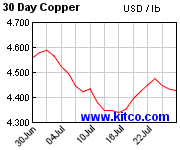
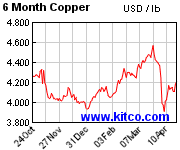
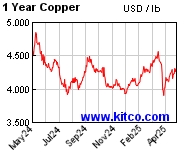
.

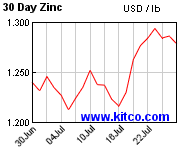
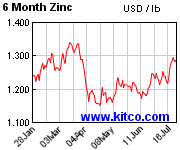
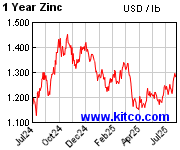
.

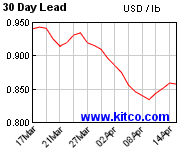
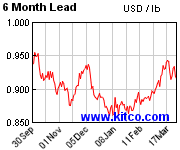
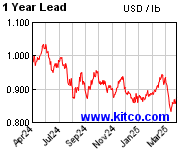
.
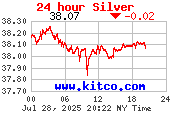
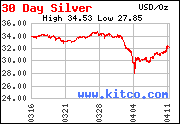
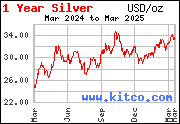
.
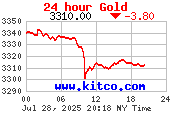
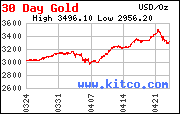
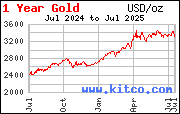
.
.




.




.




.



.



.
- Comodoro
- Mensajes: 980
- Registrado: Jue May 06, 2010 8:24 am
- Ubicación: LIMA
Re: Viernes 17/03/17 Produccion industrial
Líderes financieros del G-20 dan pie atrás en compromiso con el libre comercio
Por Michael Nienaber y Joseph Nasr
BADEN BADEN, Alemania (Reuters) - Los líderes financieros de las 20 principales economías mundiales dieron pie atrás en su promesa de mantener un sistema de comercio global abierto e inclusivo, tras no poder encontrar una solución de compromiso con un Estados Unidos cada vez más proteccionista.
Haciendo sólo una referencia simbólica a la necesidad de fortalecer la contribución del comercio a la economía, los ministros de Finanzas y banqueros centrales del G-20 rompieron con una tradición de diez años de rechazar el proteccionismo.
La omisión fue una clara derrota para el anfitrión Alemania, que había dado la pelea para que se mantuvieran los compromisos previos del grupo.
Los líderes además dieron pie atrás a la promesa de apoyar el financiamiento para la protección ambiental, un resultado previsible luego que el presidente estadounidense Donald Trump dijera que el cambio climático era una falsedad.
"Estamos trabajando para fortalecer la contribución del comercio a nuestras economías", dijeron los jefes de Finanzas tras dos días de reuniones en Baden Baden, sin ratificar compromisos anteriores de un comercio multilateral inclusivo, abierto, basado en reglas, transparente y no discriminatorio.
Bajo el lema de "Estados Unidos primero", el Gobierno de Trump ya se había excluido de un acuerdo comercial principal y propuso un nuevo impuesto sobre las importaciones, argumentando que por la protección de los trabajadores estadounidenses se debían reformular ciertas asociaciones comerciales.
El secretario del Tesoro estadounidense, Steven Mnuchin, señaló que Estados Unidos sigue creyendo en el libre comercio, pero quiere reexaminar algunos acuerdos y corregir algunos excesos.
El comunicado también desechó una referencia, usada por el G-20 el año pasado, sobre la disposición para financiar medidas contra el cambio climático, como se acordó en París el año pasado, debido a la oposición de Estados Unidos y Arabia Saudita.
No obstante, el G-20 dijo que "reafirmamos nuestros compromisos previos sobre el tipo de cambio, incluyendo que nos abstendremos de hacer devaluaciones competitivas y no dirigiremos nuestros tipos de cambios para propósitos competitivos", decía el comunicado.
(Reporte adicional de Jan Strupczewski; escrito por Balazs Koranyi; editado en español por Janisse Huambachano)
Por Michael Nienaber y Joseph Nasr
BADEN BADEN, Alemania (Reuters) - Los líderes financieros de las 20 principales economías mundiales dieron pie atrás en su promesa de mantener un sistema de comercio global abierto e inclusivo, tras no poder encontrar una solución de compromiso con un Estados Unidos cada vez más proteccionista.
Haciendo sólo una referencia simbólica a la necesidad de fortalecer la contribución del comercio a la economía, los ministros de Finanzas y banqueros centrales del G-20 rompieron con una tradición de diez años de rechazar el proteccionismo.
La omisión fue una clara derrota para el anfitrión Alemania, que había dado la pelea para que se mantuvieran los compromisos previos del grupo.
Los líderes además dieron pie atrás a la promesa de apoyar el financiamiento para la protección ambiental, un resultado previsible luego que el presidente estadounidense Donald Trump dijera que el cambio climático era una falsedad.
"Estamos trabajando para fortalecer la contribución del comercio a nuestras economías", dijeron los jefes de Finanzas tras dos días de reuniones en Baden Baden, sin ratificar compromisos anteriores de un comercio multilateral inclusivo, abierto, basado en reglas, transparente y no discriminatorio.
Bajo el lema de "Estados Unidos primero", el Gobierno de Trump ya se había excluido de un acuerdo comercial principal y propuso un nuevo impuesto sobre las importaciones, argumentando que por la protección de los trabajadores estadounidenses se debían reformular ciertas asociaciones comerciales.
El secretario del Tesoro estadounidense, Steven Mnuchin, señaló que Estados Unidos sigue creyendo en el libre comercio, pero quiere reexaminar algunos acuerdos y corregir algunos excesos.
El comunicado también desechó una referencia, usada por el G-20 el año pasado, sobre la disposición para financiar medidas contra el cambio climático, como se acordó en París el año pasado, debido a la oposición de Estados Unidos y Arabia Saudita.
No obstante, el G-20 dijo que "reafirmamos nuestros compromisos previos sobre el tipo de cambio, incluyendo que nos abstendremos de hacer devaluaciones competitivas y no dirigiremos nuestros tipos de cambios para propósitos competitivos", decía el comunicado.
(Reporte adicional de Jan Strupczewski; escrito por Balazs Koranyi; editado en español por Janisse Huambachano)
- admin
- Site Admin
- Mensajes: 165592
- Registrado: Mié Abr 21, 2010 9:02 pm
Re: Viernes 17/03/17 Produccion industrial
EEUU está a favor de libre comercio, pero quiere revisar algunos acuerdos: secretario Tesoro Mnuchin
BADEN BADEN, Alemania (Reuters) - Estados Unidos sigue comprometido con el libre comercio, pero quiere reexaminar algunos acuerdos y corregir sus excesos, dijo el sábado el secretario del Tesoro estadounidense, Steven Mnuchin, después de que los jefes de Finanzas del G-20 dieron marcha atrás a compromisos previos en esta materia.
Con una referencia apenas simbólica al comercio en su comunicado, los ministros de Finanzas y banqueros centrales de las 20 mayores economías del mundo rompieron con una década de compromiso con el comercio abierto, una clara derrota para el anfitrión de la cita, Alemania, que luchó por mantener los compromisos tradicionales del G-20.
"Desde mi punto de vista, lo que estaba en el comunicado anterior no es necesariamente relevante", afirmó Mnuchin en una conferencia de prensa en la ciudad alemana de Baden Baden. "Sé qué es lo que buscan el presidente y sus políticas y yo las negocié desde aquí. No podría estar más feliz con el resultado", agregó.
En el mayor enfrentamiento hasta la fecha entre el nuevo Gobierno estadounidense y la comunidad internacional, los jefes de Finanzas del G-20 dieron marcha atrás a su compromiso de rechazar el proteccionismo y mantener un sistema comercial global abierto e inclusivo.
"Creemos en el libre comercio, estamos en uno de los mercados más grandes del mundo, somos uno de los mayores socios comerciales en el mundo, el comercio ha sido bueno para nosotros, ha sido bueno para otra gente", comentó Mnuchin.
"Dicho esto, queremos reexaminar algunos acuerdos", afirmó, citando el Tratado de Libre Comercio de América del Norte (TLCAN), algunas normas de la Organización Mundial del Comercio (OMC) que deben ser cumplidas mejor y acuerdos más viejos que podrían tener que ser renegociados.
Aunque el Gobierno está revisando también la regulación financiera, Mnuchin prometió respaldar el estancado acuerdo Basilea III, un gran intento global para regular de forma persistente a los prestamistas.
"Esperamos que haya una resolución sobre los cambios de Basilea III/IV", dijo Mnuchin. "Debemos asegurarnos de que traemos unidad al mercado internacional".
BADEN BADEN, Alemania (Reuters) - Estados Unidos sigue comprometido con el libre comercio, pero quiere reexaminar algunos acuerdos y corregir sus excesos, dijo el sábado el secretario del Tesoro estadounidense, Steven Mnuchin, después de que los jefes de Finanzas del G-20 dieron marcha atrás a compromisos previos en esta materia.
Con una referencia apenas simbólica al comercio en su comunicado, los ministros de Finanzas y banqueros centrales de las 20 mayores economías del mundo rompieron con una década de compromiso con el comercio abierto, una clara derrota para el anfitrión de la cita, Alemania, que luchó por mantener los compromisos tradicionales del G-20.
"Desde mi punto de vista, lo que estaba en el comunicado anterior no es necesariamente relevante", afirmó Mnuchin en una conferencia de prensa en la ciudad alemana de Baden Baden. "Sé qué es lo que buscan el presidente y sus políticas y yo las negocié desde aquí. No podría estar más feliz con el resultado", agregó.
En el mayor enfrentamiento hasta la fecha entre el nuevo Gobierno estadounidense y la comunidad internacional, los jefes de Finanzas del G-20 dieron marcha atrás a su compromiso de rechazar el proteccionismo y mantener un sistema comercial global abierto e inclusivo.
"Creemos en el libre comercio, estamos en uno de los mercados más grandes del mundo, somos uno de los mayores socios comerciales en el mundo, el comercio ha sido bueno para nosotros, ha sido bueno para otra gente", comentó Mnuchin.
"Dicho esto, queremos reexaminar algunos acuerdos", afirmó, citando el Tratado de Libre Comercio de América del Norte (TLCAN), algunas normas de la Organización Mundial del Comercio (OMC) que deben ser cumplidas mejor y acuerdos más viejos que podrían tener que ser renegociados.
Aunque el Gobierno está revisando también la regulación financiera, Mnuchin prometió respaldar el estancado acuerdo Basilea III, un gran intento global para regular de forma persistente a los prestamistas.
"Esperamos que haya una resolución sobre los cambios de Basilea III/IV", dijo Mnuchin. "Debemos asegurarnos de que traemos unidad al mercado internacional".
- admin
- Site Admin
- Mensajes: 165592
- Registrado: Mié Abr 21, 2010 9:02 pm
Re: Viernes 17/03/17 Produccion industrial
Banco Popular de China dice que mejoraron perspectivas económicas del país
PEKÍN (Reuters) - El gobernador del banco central chino, Zhou Xiaochuan, afirmó que las perspectivas de crecimiento de su país han mejorado pero que su política monetaria sigue siendo prudente y neutral.
Zhou realizó esas declaraciones en una reunión con otros líderes financieros de los países BRICS (Brasil, Rusia, India, China y Sudáfrica) en Alemania, durante la cumbre del G-20, según un post de la página de internet del Banco Popular de China, publicado el sábado.
El martes, China publicó indicadores que dieron cuenta de un buen inicio de 2017, gracias al apoyo del crédito bancario, gasto público y un repunte de la inversión privada. El sábado, se publicaron datos que mostraron que su mercado inmobiliario retomó la marcha en febrero.
"La tasa de crecimiento económico de China es estable en general y están mejorando sus perspectivas de crecimiento", declaró Zhou. "China seguirá aplicando una política fiscal activa y una política monetaria prudente y neutral".
El jueves, el Banco Popular de China elevó las tasas de interés a corto plazo por tercera vez en igual cantidad de meses, en lo que economistas dijeron que era un intento por contener las salidas de capital y mantener al yuan estable después de que la Reserva Federal de Estados Unidos elevó los tipos esta semana.
"En términos de políticas macroeconómicas, actualmente China está centrada en ajustes estructurales a la economía e impulsando reformas en el lado de la oferta", sostuvo Zhou.
Por su parte, el ministro de Finanzas chino, Xiao Jie, dijo que los países BRICS deberían fortalecer la coordinación macroeconómica y promover conjuntamente el crecimiento. La cumbre anual de los BRICS se realizará en septiembre en la ciudad china de Xiamen.
Los líderes financieros del mundo no llegaron a un acuerdo de consenso que apoyara el libre comercio, en un retroceso respecto a sus compromisos previos de rechazar el proteccionismo, según el comunicado del G-20.
PEKÍN (Reuters) - El gobernador del banco central chino, Zhou Xiaochuan, afirmó que las perspectivas de crecimiento de su país han mejorado pero que su política monetaria sigue siendo prudente y neutral.
Zhou realizó esas declaraciones en una reunión con otros líderes financieros de los países BRICS (Brasil, Rusia, India, China y Sudáfrica) en Alemania, durante la cumbre del G-20, según un post de la página de internet del Banco Popular de China, publicado el sábado.
El martes, China publicó indicadores que dieron cuenta de un buen inicio de 2017, gracias al apoyo del crédito bancario, gasto público y un repunte de la inversión privada. El sábado, se publicaron datos que mostraron que su mercado inmobiliario retomó la marcha en febrero.
"La tasa de crecimiento económico de China es estable en general y están mejorando sus perspectivas de crecimiento", declaró Zhou. "China seguirá aplicando una política fiscal activa y una política monetaria prudente y neutral".
El jueves, el Banco Popular de China elevó las tasas de interés a corto plazo por tercera vez en igual cantidad de meses, en lo que economistas dijeron que era un intento por contener las salidas de capital y mantener al yuan estable después de que la Reserva Federal de Estados Unidos elevó los tipos esta semana.
"En términos de políticas macroeconómicas, actualmente China está centrada en ajustes estructurales a la economía e impulsando reformas en el lado de la oferta", sostuvo Zhou.
Por su parte, el ministro de Finanzas chino, Xiao Jie, dijo que los países BRICS deberían fortalecer la coordinación macroeconómica y promover conjuntamente el crecimiento. La cumbre anual de los BRICS se realizará en septiembre en la ciudad china de Xiamen.
Los líderes financieros del mundo no llegaron a un acuerdo de consenso que apoyara el libre comercio, en un retroceso respecto a sus compromisos previos de rechazar el proteccionismo, según el comunicado del G-20.
- admin
- Site Admin
- Mensajes: 165592
- Registrado: Mié Abr 21, 2010 9:02 pm
Re: Viernes 17/03/17 Produccion industrial
Precios de viviendas en China se aceleran en febrero en medio de batalla contra especulación
Por Elias Glenn
PEKÍN (Reuters) - El pujante mercado de la vivienda en China retomó la marcha en febrero después de una desaceleración de los precios en los cuatro meses previos, con un alza en el promedio de los valores de las viviendas en 70 grandes ciudades pese a los esfuerzos del Gobierno por contenerlos en medio de demanda especulativa.
En comparación con el mes previo, el precio de las nuevas viviendas subió un 0,3 por ciento, una aceleración respecto al 0,2 por ciento registrado en enero, de acuerdo a cálculos de Reuters basados en datos publicados por la Oficina Nacional de Estadísticas el sábado.
El avance mensual en los precios sugiere que la especulación en ese mercado no ha sido contenida todavía, incluso pese a que los gobiernos locales han puesto en marcha medidas más restrictivas por temores a que el auge de los últimos años termine en el colapso.
Las ventas de propiedades en China subieron inesperadamente en los dos primeros meses del año pese a las medidas del gobierno para enfriar el mercado, aunque la expansión de la inversión en bienes raíces disminuyó ligeramente, de acuerdo a los datos oficiales.
Los precios para la compra de casas nuevas en Pekín estuvieron estable en la comparación intermensual en febrero, mientras que los precios de las casas de segunda mano subieron un 1,3 por ciento.
(Reporte de Elias Glenn y Yawen Chen; Editado en español por Gabriela Donoso)
Por Elias Glenn
PEKÍN (Reuters) - El pujante mercado de la vivienda en China retomó la marcha en febrero después de una desaceleración de los precios en los cuatro meses previos, con un alza en el promedio de los valores de las viviendas en 70 grandes ciudades pese a los esfuerzos del Gobierno por contenerlos en medio de demanda especulativa.
En comparación con el mes previo, el precio de las nuevas viviendas subió un 0,3 por ciento, una aceleración respecto al 0,2 por ciento registrado en enero, de acuerdo a cálculos de Reuters basados en datos publicados por la Oficina Nacional de Estadísticas el sábado.
El avance mensual en los precios sugiere que la especulación en ese mercado no ha sido contenida todavía, incluso pese a que los gobiernos locales han puesto en marcha medidas más restrictivas por temores a que el auge de los últimos años termine en el colapso.
Las ventas de propiedades en China subieron inesperadamente en los dos primeros meses del año pese a las medidas del gobierno para enfriar el mercado, aunque la expansión de la inversión en bienes raíces disminuyó ligeramente, de acuerdo a los datos oficiales.
Los precios para la compra de casas nuevas en Pekín estuvieron estable en la comparación intermensual en febrero, mientras que los precios de las casas de segunda mano subieron un 1,3 por ciento.
(Reporte de Elias Glenn y Yawen Chen; Editado en español por Gabriela Donoso)
- admin
- Site Admin
- Mensajes: 165592
- Registrado: Mié Abr 21, 2010 9:02 pm
Re: Viernes 17/03/17 Produccion industrial
Departamento Seguridad Nacional EEUU busca propuestas para muro fronterizo con México
WASHINGTON (Reuters) - El Departamento de Seguridad Nacional de Estados Unidos hizo pública una petición de propuestas de prototipos para construir un muro en la frontera con México, indicando que lo ideal es que tenga un alto de 9 metros y que la parte que da a territorio estadounidense tenga un "color estéticamente agradable".
La construcción de un muro para detener la inmigración ilegal fue una de las principales y más polémicas promesas de campaña del presidente Donald Trump. El mandatario aseguró que obligará a México a reembolsar a Estados Unidos el costo, pero su vecino ha dicho en repetidas ocasiones que no lo hará.
Más temprano en la semana, la Casa Blanca solicitó 3.000 millones de dólares extras para Seguridad Nacional, con la intención de destinar parte de estos fondos a la planificación y construcción del muro fronterizo.[ID:nL2N1GT0Q1]
Según un documento publicado en la noche del viernes en internet por la agencia de Protección Fronteriza y Aduanas de Estados Unidos, el muro debería tener 9 metros de alto, estar edificado con cemento y ser "físicamente imponente". No obstante, precisa que podrían ser aceptables diseños por encima de los 5,5 metros.
"Diseños con alturas inferiores a los 5,5 metros no serán aceptables", indicó el documento, que agregó que la muralla debe incluir elementos que impidan que las personas puedan trepar por él y que imposibilite también excavar por debajo.
"El muro debería impedir/frenar por un mínimo de 1 hora la creación de una brecha física (por ejemplo, abrir un hueco en el muro) superior a los 30 centímetros de diámetro o cuadrados usando martillos, gatos hidráulicos, picos, cinceles, herramientas de impacto operadas con batería, herramientas de corte operadas con batería, soldadores de oxiacetileno u otras herramientas manuales similares", señaló.
WASHINGTON (Reuters) - El Departamento de Seguridad Nacional de Estados Unidos hizo pública una petición de propuestas de prototipos para construir un muro en la frontera con México, indicando que lo ideal es que tenga un alto de 9 metros y que la parte que da a territorio estadounidense tenga un "color estéticamente agradable".
La construcción de un muro para detener la inmigración ilegal fue una de las principales y más polémicas promesas de campaña del presidente Donald Trump. El mandatario aseguró que obligará a México a reembolsar a Estados Unidos el costo, pero su vecino ha dicho en repetidas ocasiones que no lo hará.
Más temprano en la semana, la Casa Blanca solicitó 3.000 millones de dólares extras para Seguridad Nacional, con la intención de destinar parte de estos fondos a la planificación y construcción del muro fronterizo.[ID:nL2N1GT0Q1]
Según un documento publicado en la noche del viernes en internet por la agencia de Protección Fronteriza y Aduanas de Estados Unidos, el muro debería tener 9 metros de alto, estar edificado con cemento y ser "físicamente imponente". No obstante, precisa que podrían ser aceptables diseños por encima de los 5,5 metros.
"Diseños con alturas inferiores a los 5,5 metros no serán aceptables", indicó el documento, que agregó que la muralla debe incluir elementos que impidan que las personas puedan trepar por él y que imposibilite también excavar por debajo.
"El muro debería impedir/frenar por un mínimo de 1 hora la creación de una brecha física (por ejemplo, abrir un hueco en el muro) superior a los 30 centímetros de diámetro o cuadrados usando martillos, gatos hidráulicos, picos, cinceles, herramientas de impacto operadas con batería, herramientas de corte operadas con batería, soldadores de oxiacetileno u otras herramientas manuales similares", señaló.
- admin
- Site Admin
- Mensajes: 165592
- Registrado: Mié Abr 21, 2010 9:02 pm
45 mensajes
• Página 3 de 3 • 1, 2, 3
¿Quién está conectado?
Usuarios navegando por este Foro: No hay usuarios registrados visitando el Foro y 24 invitados
